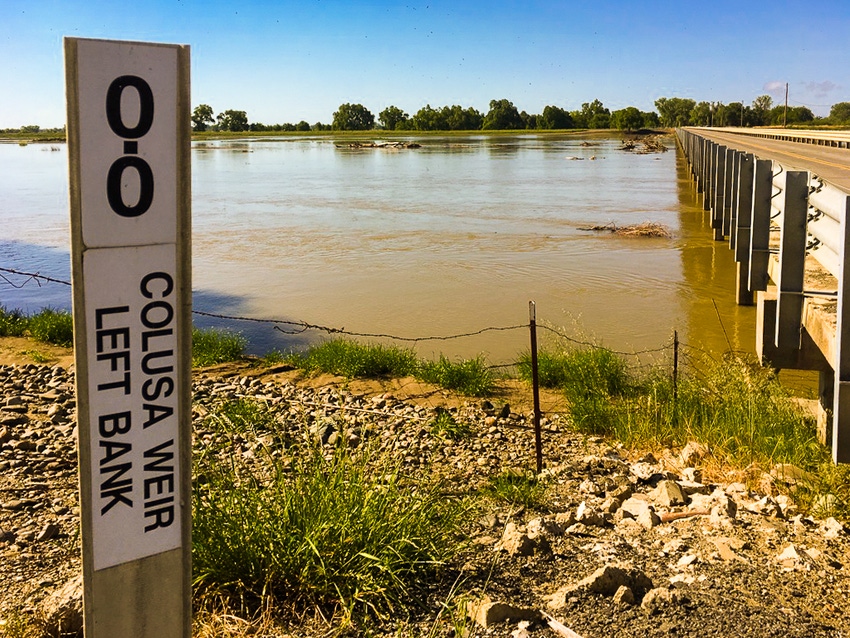
After several years of drought-induced rice fallowing in California, growers are in an ironic position of too much water, but much the same effect.
California’s unrelenting winter of 2016/2017 wasn’t lacking for water – so much of continued to fall throughout the spring when growers should have been drying fields and preparing the ground to flood and plant in May, that some could hold back as much as 30 percent of their rice ground this season.
California Rice Commission (CRC) spokesman Jim Morris said in mid-June that the commission still didn't know how much rice had been planted because growers were still planting rice in mid-June.
“This is late in a historical sense, but not unprecedented,” Morris said.
While the commission has formally budgeted itself on assessments from 500,000 acres of rice, according to board chairman Mark Kimmelshue, the U.S. Department of Agriculture’s National Agricultural Statistics Service says farmer intentions were to plant 539,000 acres of rice in California, 2,000 acres short of what was planted last year.
Half-way into June the California Rice Commission was still trying to tally rice acreage across the state. The commission’s budget is paid by a per-hundredweight assessment on rice, so knowing what growers are planting is vital to the organization’s finances.
Location is everything
Colusa rice grower Kurt Richter of Richter Ag has 5,000 acres of rice spread from the east side to the west side of the Sacramento Valley. His Colusa-area (east side) rice ground was flooded off and on by the Sacramento River through mid-May, forcing him to leave upwards of 30 percent of his total rice acreage unplanted. The ground was simply too wet to plant by June 1, the target date California rice growers aim for in their attempt to beat early-autumn rain or heavy, drying north winds that can affect quality.
Richter says he makes it a practice to purchase prevented planting insurance from his insurance company for just this reason.
“A lot of farmers think it’s a waste of money, and 19 out of 20 years it probably is,” Richter says of the private insurance policy. “You have to buy the policy a year ahead of time, so it’s not something you can buy based on the weather forecast.”
To hit the June 1 target rice growers like Richter want dry weather in March and April to drain fields and work the soil in preparation for irrigation deliveries by May. Because California’s rice crop is primarily seeded by air, those irrigation deliveries are necessary to flood the fields a few inches deep prior to planting.
Several miles up River Road from Richter Ag, Ben and Denise Carter of Benden Farms grow 600 acres of organic rice. Though they had some row crop land flooded, including about 30 acres of alfalfa, which Ben says he may simply graze his cattle on because it’s of no use to cut and bale, theirs is a different story with respect to rice.
The estimated 25 percent of Benden Farms’ rice ground that will be fallowed this year is done so because the organic market contracts were not there for them to plant rice. This had to do largely with insufficient price offers. Others attempting to contract with him simply did not make their requests in time to prepare the ground and plant the crop.
Further to the north in Butte County, Ted Trimble, general manager of the Western Canal Water District in Richvale, says the issue this year isn’t a lack of water but the challenge of moving water quickly through a system during an abbreviated planting schedule.
If any growers in his district were going to hold back rice acreage, it would be because the window of opportunity to plant was too short.
That was the case for WCWD director Daniel Robinson, a rice grower who farms entirely in the Butte County-based water district.
Robinson said he was able to get 80 percent of his rice acreage planted this year simply because the seven-week window he needs to work the ground and plant 100 percent of his rice fields was only four weeks long.
Marketing
Aside from chairing the CRC, Kimmelshue is a rice marketer with Associated Rice Marketing Cooperative in Richvale.
Kimmelshue says the reduced plantings in California and the likelihood of reduced plantings in other rice-growing regions in the U.S. could help turn rice prices in a more positive direction for growers.
In late May Kimmelshue said rice prices to the grower were hovering around $15 to $15.50 per hundredweight (cwt). These prices were an improvement over the previous month’s prices and $2 higher than California growers were being paid over the past two years.
Kimmelshue credits the price hike to “carryovers that are pretty much all gone.” While there is typically a carryover of rice to be marketed each year, Kimmelshue says the quantities available now are “more normal” and not as high as they had been in the past.
California primarily grows medium grain rice. This year close to 90 percent of the state’s rice crop will be medium grain, according to the USDA. California is projected to produce 72 percent of the total U.S. medium grain rice crop in 2017.
Rice marketers are currently working with the 2016 rice crop. According to Kimmelshue, though the 2017 crop is projected to be lower in production there are too many unknowns to predict what will be harvested in the fall.
For this reason Kimmelshue says he doesn’t see rice prices to the grower “spiking,” though they could improve by another dollar or two to the California grower.
“If you could get to $16-$17 (per cwt) that would be better,” he said of grower prices.
“I think supply is going to be down nationwide; and, because of that I think you’re going to see the price move up,” he continued.
About the Author(s)
You May Also Like






